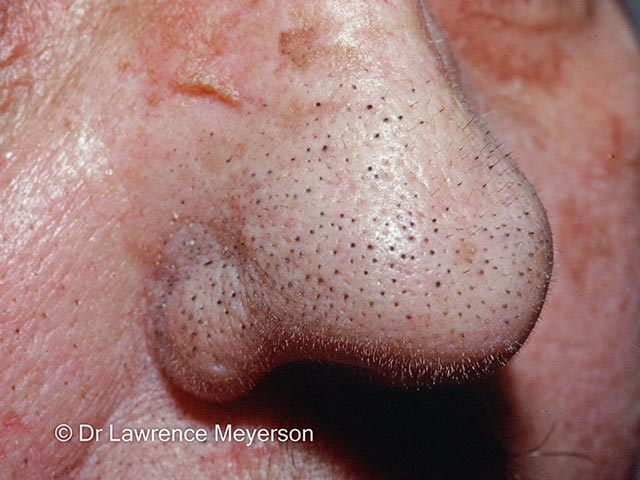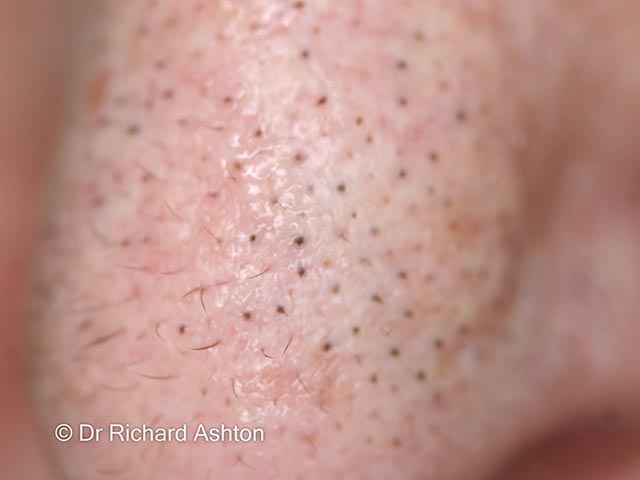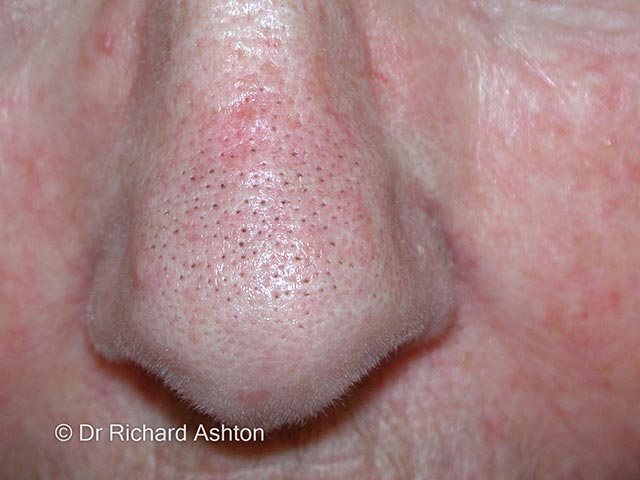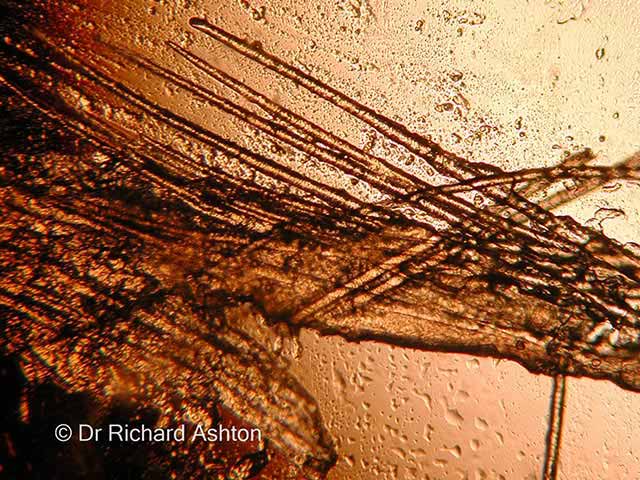Main menu
Common skin conditions

NEWS
Join DermNet PRO
Read more
Quick links
Last Reviewed: January, 2025
Author(s): Dr Maitumelo Imeldah Motoroko, Plastic surgery and research registrar, Australia; Mr Mylestone Gobe Monna, Monash University, Australia; Dr Neo D.L. Sekgoma, Dermatologist, Scottish Livingstone Hospital, Botswana (2025)
Peer reviewed by : Dr Clarissa Xuan Ning Ting, St Vincent’s Hospital, Australia (2025)
Previous contributors: Vanessa Ngan, DermNet staff writer; Dr Amanda Oakley, Dermatologist (2014)
Reviewing dermatologist: Dr Ian Coulson (2025)
Edited by the DermNet Content Department
Introduction
Demographics
Causes
Clinical features
Variation in skin types
Complications
Diagnosis
Differential diagnoses
Treatment
Prevention
Outcome
Trichostasis spinulosa (TS) is a common yet underdiagnosed benign follicular disorder mainly affecting adults. It is commonly seen on the nose, face, and cheek but can affect other body parts.
TS appears as multiple entrapped vellus hairs in a hyperkeratotic dilated hair follicle (tiny open pores with numerous tiny hairs) which can be mistaken for acne. A follicle can retain 5-60 hairs and it is usually 1mm in size, usually only visible with a magnifying glass.

TS on the nose - multiple hairs emanate from each follicle

A close up of TS on the nose (TS-patient1)

Comedo-like lesions due to nasal TS
See more images of trichostasis spinulosa
The exact cause is unknown. However, several aetiologies have been proposed.
Often asymptomatic
Younger patients may present with cosmetic concerns of ‘unsuccessful’ acne treatment
Cutaneous features
Skin may be rough and scaly
Erythema and oedema around manipulated lesions
Non-cutaneous features
The dark comedo-like lesions may be less evident in darker skin types.
A bundle of multiple vellus hairs surrounded by a keratinous sheath can be seen after potassium hydroxide solution application. The hair bundle can be removed for examination using either forceps or a comedone extractor.

Microscopy of TS - multiple vellus hair arising from a single follicle
Dermoscopic examination
No treatment is necessary. However, removal may be sought for cosmetic reasons.
No specific treatment has been widely accepted.
TS often goes undetected and does not require any specific prevention.
The exact causes and risk factors of TS are still unknown, therefore there are no established ways to prevent it. It is important to educate patients on the condition and encourage good skin and hair care.
The prognosis of TS is generally favourable, and the condition is harmless. However, it is important to note that it may negatively impact self-esteem and cause emotional distress. Hence, effective management strategies and regular follow-up should be considered.
Some cases may resolve spontaneously. Following treatment, the condition may reappear upon discontinuation of the specific treatment.